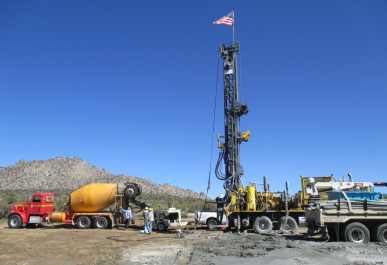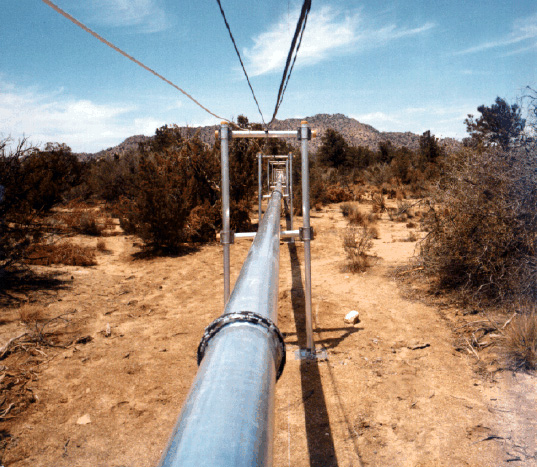PIÑON FLAT GEOPHYSICAL OBSERVATORY
Cecil and Ida Green Piñon Flat Geophysical Observatory (PFO) (and Camp Elliott)
The Cecil and Ida Green Piñon Flat Geophysical Observatory (PFO) is a subsurface testbed located about 70 miles northeast of UCSD in the mountains above Palm Springs. Owned by UC San Diego, operated by the Institute of Geophysics and Planetary Physics (IGPP) intended to measure, as accurately as possible, crustal deformation in a tectonically active area, so as to improve our understanding of the earthquake cycle. In turn, this will improve estimates of the earthquake hazard throughout southern California, and serve as a testing ground for new geophysical instrumentation.
PFO covers a square area (0.5 miles x 0.5 miles) equipped with a range of reference-standard earth-sensing systems and has numerous boreholes (cased and uncased) ranging in depth to ~300 m. Working collaboratively, researchers can request time to use these systems and boreholes to complete multiple-disciplinary studies.
PFO is a world-class geophysical testbed with a long history that is equipped with AC power, shop-equipment, internet, an underground seismic test facility, boreholes, and various on-site trailers/storage containers. As a facility, PFO is an ideal resource for a variety of scientific studies including environmental, UAV, and renewable energy. It is also easy to access from the Los Angeles region. As it is located in an active tectonic area, it is an excellent location for testing instruments in an area of high seismicity and small earthquakes often occur within a few km of the site.


Tectonic Setting
The observatory is located between the San Andreas and San Jacinto faults, the two most active faults on the Southern California segment of the Pacific/North American plate boundary. The distances to these faults (25 km to the San Andreas and 12 km to the San Jacinto) to the observatory are close enough to monitor the deformations that drive the earthquake process. Large earthquakes may occur on these faults in the future: conservatively, roughly 30% odds in the next 30 years or so. The 30-kilometer section of the San Jacinto fault closest to PFO has not ruptured in this century, although sections north and south of it have. Earthquakes as large as magnitude 4 or 5 happen regularly, and larger events are possible. The San Andreas has not broken in historic time and may pose a significant risk.
Current Activities
Piñon Flat has been busy this year. In addition to ongoing long-term seismic and geodetic measurements, several temporary experiments are underway. These include a 300 station nodal deployment (collaboration with University of Grenoble and Frank Vernon), a borehole seismic source test (Lawrence Berkey National Laboratory and Frank Wyatt, and a borehole DAS installation (Paulsson, LLC and Rob Mellors). Test deployments of drone flights have also been conducted (Jamin Greenbaum).
Ongoing experiments include geodetic and seismic instrumentation. Geodetic instrumentation includes laser strainmeters (fiber and vacuum) operated by Mark Zumberge and Frank Wyatt as well as other GNSS monitoring and SAR corner reflectors. Seismic sensors include the IDA GSN sensors (100 m very broadband sensor) and surface broadband, Frank Vernon operates the PY broadband array (13 STS5/T120PH) and a BlueSeis rotational sensor operated in collaboration with Heiner Igel at Ludwig Maximilians University in Munich, the CTBTO seismic and infrasound (Michael Hedlin).

